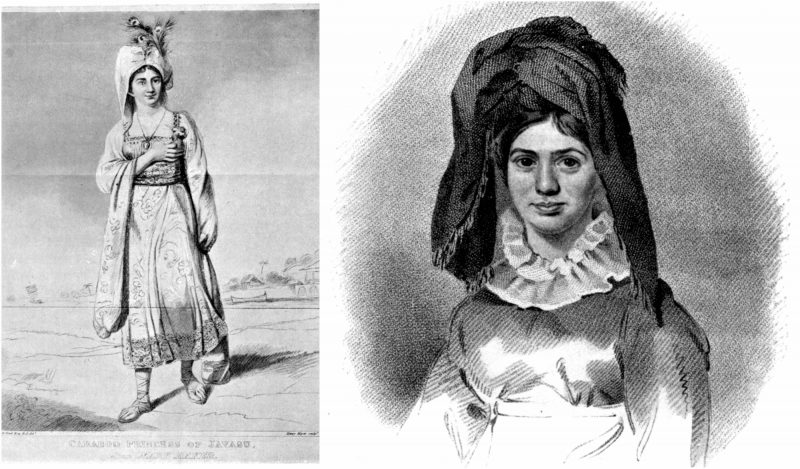The 1994 film Princess Caraboo is about real events that took place in early 19th century England. Phoebe Cates plays a woman who shows up one day in the countryside of England, the year being 1817, and ignites the curiosity of the villagers as to who she might be, with her strange clothes and incomprehensible language.
As the plot develops, the mysterious woman finds shelter at the home of the Worralls, played by Wendy Hughes and Jim Broadbent. Another character is the Worralls’ family butler, Greek by origin, named Frixos (played by Phoebe Cates’ real-life spouse, Kevin Kline).
Frixos becomes suspicious of the strange woman, and he eventually persuades the Worralls to check with the local magistrate about the newcomer’s identity. The woman then tells an elaborate story of her origins: she is a princess named Caraboo, and she reached England after escaping a group of pirates who abducted her.
This brings us back to the real story and the date of April 3, 1817, when reportedly a beautiful woman in her mid-twenties was found roaming the road close to the village of Almondsbury, around the area of Bristol. The woman appeared to have a turban on her head and wore a modest-looking black dress. She indeed spoke another language, and eventually ended up in the house of the real Worralls.
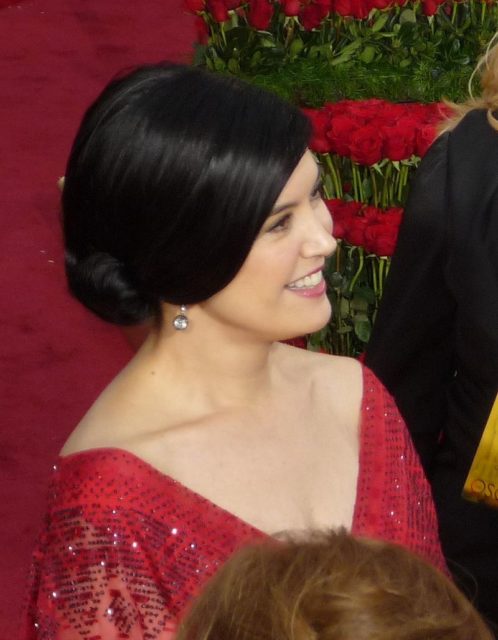
In the beginning, it was Mrs. Elizabeth Worrall who would mostly take care of the foreigner, providing her with shelter and food. It also took some time for the Worralls to learn the name of the mysterious woman, but after the woman kept pointing her hand at her chest saying, “Caraboo,” this is what people started to call her.
For a period, Caraboo was registered as a vagrant, but meanwhile, her popularity steadily grew. Locals in the village and also some in Bristol were eager to learn more about Caraboo, which is why she was often introduced to other foreigners and travelers in the hope that someone would understand her language.
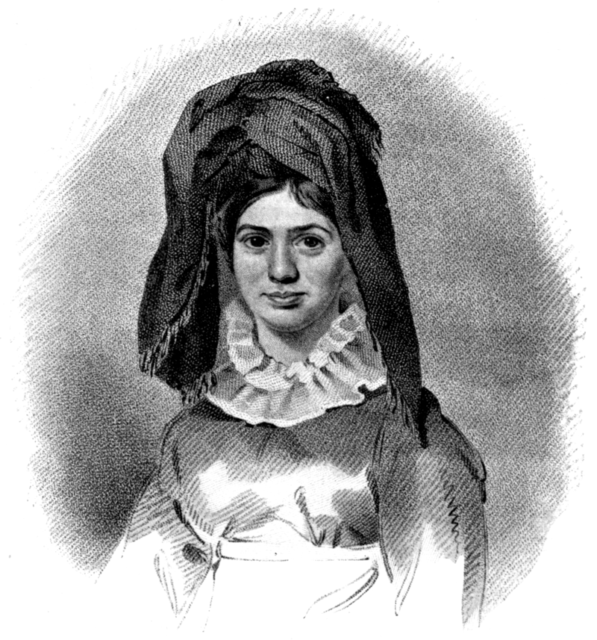
One day, a sailor from Portugal arrived in the region named Manuel Eynesso, and he reportedly said that he could understand the language of Caraboo. After meeting with the stranger, Eynesso shared his findings with the Worralls, telling them that she was a princess.
According to what she had shared, her father was of high rank and she came from an island somewhere in the midst of the Indian Ocean. She had had a beautiful garden back on the island, where she would take baths, have her hair adorned with feathers from peacocks, and be carried on servants’ shoulders.
Her happy life allegedly ended when one day she was kidnapped by a group of pirates, after which she was taken on a vessel that sailed the seven seas for weeks. Until one day, the vessel approached land, which is when she escaped the ship’s crew, swimming to shore and finding herself on the coast of England. After days of roaming around the area, she reached Almondsbury.
At first, people believed the “life story” of the princess, and they started treating her like one. She was Princess Caraboo, and the Worralls were now delighted by the “fact” that they had taken care of such a significant person, so they started to spread the word.
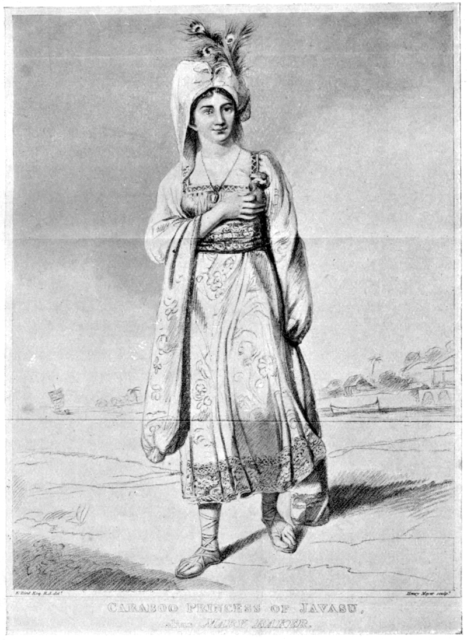
The Worralls kept the foreigner at their house and treated her as if she was indeed a member of a royal family. The woman would take baths in the Worralls’ garden, opt for rice over bread, drink tea, and do everything else to stay faithful to her testimonies. Painters also came to see her, and local newspapers started to feature her in stories.
In reality, of course, such a princess did not exist, and it wasn’t long before the truth came out. Not only did some people find her handwriting familiar, but the coverage in newspapers meant she was one day recognized by someone who knew her to be the daughter of a cobbler from Witheridge, in Devon. The real name of the self-proclaimed princess turned out to be Mary Baker.
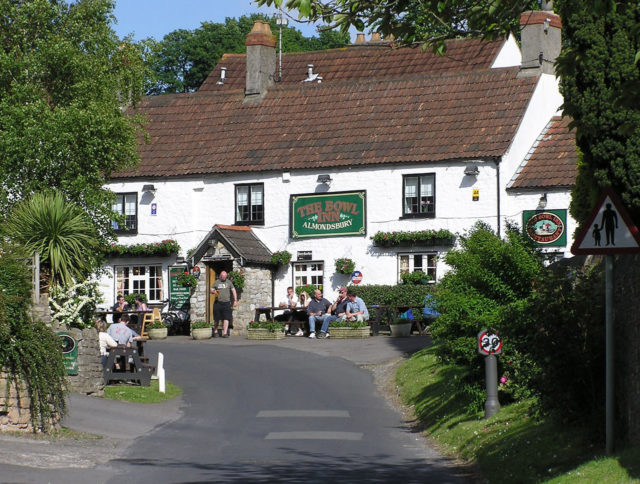
When the truth was discovered, it was revealed that Mary hadn’t had an easy life at all, which is perhaps the reason why she started to build up such an imaginary character. Before coming to Bristol, she had worked at several places around England as a servant but nowhere had she found a job that would generate regular income. As accounts suggest, she had also given birth to a child who died, and her husband had left her to travel abroad.
Mary would arrive in Almondsbury after staying for a period of time in France, from where she certainly picked up some words to make up her strange language. She then reportedly came to Devon by coach, which back then was by no means a cheap way of travel, and where she got the money from is a mystery.

Pretending that she was unable to understand English seemed to be one of the most significant elements in building her hoax as being a princess. Moreover, the way she had presented the past in her life story was not easy to distinguish either, what was real and what was made up. The attention she received from the locals of Almondsbury and Bristol certainly made her feel good.
After learning the truth about Mary, Mrs. Worrall was angry, but she would not quit on her completely. In fact, the Worralls helped the fake princess travel to America in order to reach Philadelphia. By this point, the reputation of Mary had spread out of control, and some people already knew her as she took her first steps on the other side of the Atlantic.
For a while, in Philadelphia, she retained the character of Princess Caraboo, even delivering some theatrical performances on stage. The performances, however, did not lead to lasting success, and eventually, Mary came back to England in 1824. She would attempt to present herself as the fake character first while staying in London, and later even back in Bristol, where she finally settled down.
By the end of the decade, Mary had given birth to a daughter and would ultimately find an occupation. She earned a living by selling leeches to the local Bristol Infirmary Hospital, and reached old age, passing away at 75. Her grave can be found in the Hebron Road Burial Ground in Bristol.
